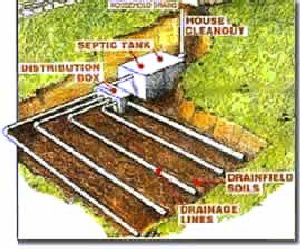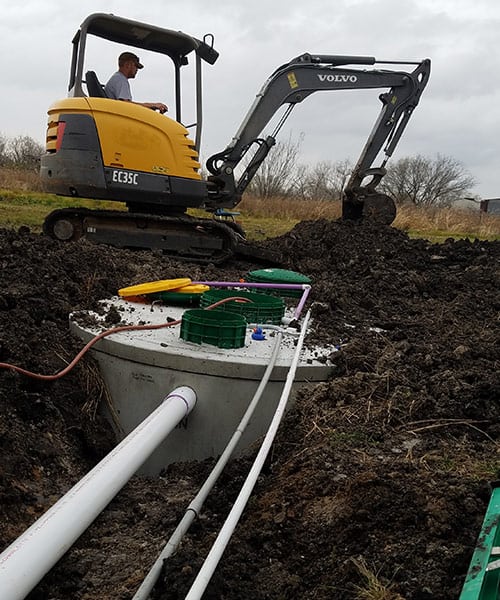Introduction
A septic drain field, an integral component of your home’s wastewater system, efficiently disposes of household waste. However, when the drain field becomes saturated or overwhelmed, it can lead to a wet, soggy yard—an unsightly and unsanitary problem. Understanding the causes and solutions for a wet septic drain field is crucial for maintaining a healthy and functional wastewater system. This article provides a comprehensive guide to identify and address this issue, restoring your yard and ensuring optimal septic system performance.

Image: whoreofbeauty.blogspot.com
Understanding the Septic Drain Field
The septic drain field consists of perforated pipes buried underground, surrounded by a bed of gravel or crushed stone. Wastewater from your home’s plumbing system exits the septic tank and flows into the drain field. The perforated pipes allow the wastewater to seep out and percolate through the gravel or stone, filtering away harmful bacteria and contaminants. When the soil beneath the drain field is suitable for drainage, the treated wastewater continues its journey downward and eventually re-enters the groundwater table.
Causes of a Wet Septic Drain Field
Numerous factors can contribute to a wet septic drain field. Understanding these causes is essential for designing an effective solution. Common culprits include:
- Excessive Water Usage: High water usage in the household, particularly during peak hours, can overwhelm the drain field’s capacity. Consider reducing water consumption by fixing leaks, installing low-flow appliances, and practicing water-saving habits.
- Clogged Pipes: Blockages in the pipes leading to or within the drain field can prevent wastewater from flowing freely. Tree roots, grease, and other debris may cause these clogs.
- Soil Conditions: Poor soil drainage beneath the drain field can hinder the wastewater’s ability to percolate. Factors such as compacted clay soil, high water table, or inadequate slope can all contribute to drainage issues.
- Overuse of Chemicals: Excessive use of harsh chemicals, such as bleach or antibacterial cleaners, can kill the beneficial bacteria in the septic tank that aid in waste decomposition. This can lead to solids accumulating in the drain field, reducing its effectiveness.
- Damaged Drain Field: Age, heavy traffic, or improper installation can damage the drain field itself, creating leaks or breaks that allow wastewater to escape.
Identifying a Wet Septic Drain Field
Recognizing the signs of a wet septic drain field is crucial for prompt and effective action. Common indicators include:
- Pooling Water: Noticeable puddles or standing water in your yard, especially near the drain field, can indicate a problem.
- Saturated Soil: Soggy, saturated soil around the drain field may signal that the system is struggling to absorb and process wastewater.
- Odors: Foul odors emanating from the drain field are a telltale sign of wastewater leaking into the surrounding soil.
- Effluent Rising to the Surface: In severe cases, raw or partially treated wastewater may surface in your yard or even back up into your home.

Image: rubadubplumbing.com
Fixing a Wet Septic Drain Field
Once you’ve identified a wet septic drain field, addressing the underlying cause is paramount to restore proper functionality. Here are some effective solutions:
- Reduce Water Consumption: Reducing water usage by addressing leaks, installing low-flow appliances, and practicing water conservation can alleviate stress on the septic system.
- Clear Clogs: If clogs are suspected, contact a professional plumber to diagnose and clear the blockages. Regular septic tank pumping can also prevent clogs from developing.
- Improve Soil Drainage: For drainage issues, consider enhancing soil conditions by adding drainage tiles, gravel layers, or perforated pipes to improve soil permeability.
- Use Septic-Friendly Products: Reduce the use of harsh chemicals to avoid killing beneficial bacteria in the septic tank, which can lead to drain field clogging. Consider using septic-safe cleaners and detergents instead.
- Repair or Replace Damaged Drain Field: If the drain field is damaged, repairs may involve patching leaks or replacing damaged pipes. In some cases, complete replacement of the drain field may be necessary.
Preventive Measures
To prevent future issues with your septic drain field, consider these preventive measures:
- Regular Septic Tank Pumping: Regular pumping, typically every 3-5 years, removes solids and sludge from the septic tank, preventing them from entering the drain field and clogging the system.
- Water Conservation: Adopting water-saving practices, such as using low-flow fixtures and appliances, reduces the volume of wastewater entering the septic system.
- Proper Disposal of Grease: Avoid pouring grease or cooking oils down drains, as they can solidify and cause clogs in the septic system components.
- Use Bio-Degradable Products: Utilizing biodegradable products, such as toilet paper and cleaning agents, minimizes the accumulation of non-degradable materials in the septic tank, reducing the risk of clogging.
- Protect Drain Field Area: Restrict traffic and heavy objects from driving or parking over the drain field area to prevent soil compaction and damage to the pipes.
How To Fix A Wet Septic Drain Field
Conclusion
A wet septic drain field can be a nuisance and a potential health hazard. By understanding the causes and employing effective solutions, you can effectively fix the issue and restore your yard. Preventive measures, such as regular septic tank pumping, water conservation, and proper disposal of waste, will ensure the long-lasting performance of your septic system and maintain a healthy and comfortable living environment. If you suspect a problem with your septic drain field, don’t hesitate to contact a qualified plumber or septic service professional for expert assessment and assistance.